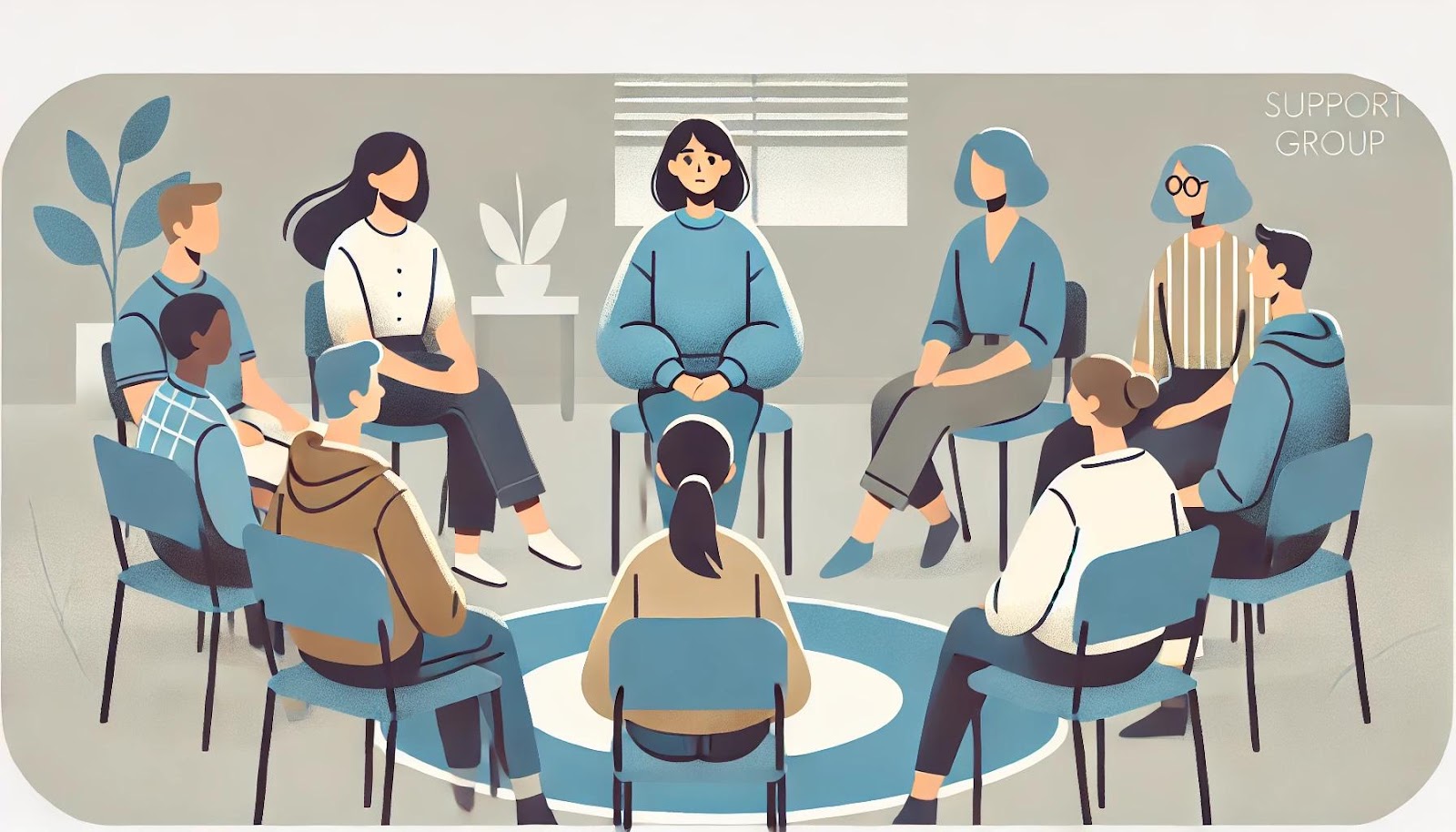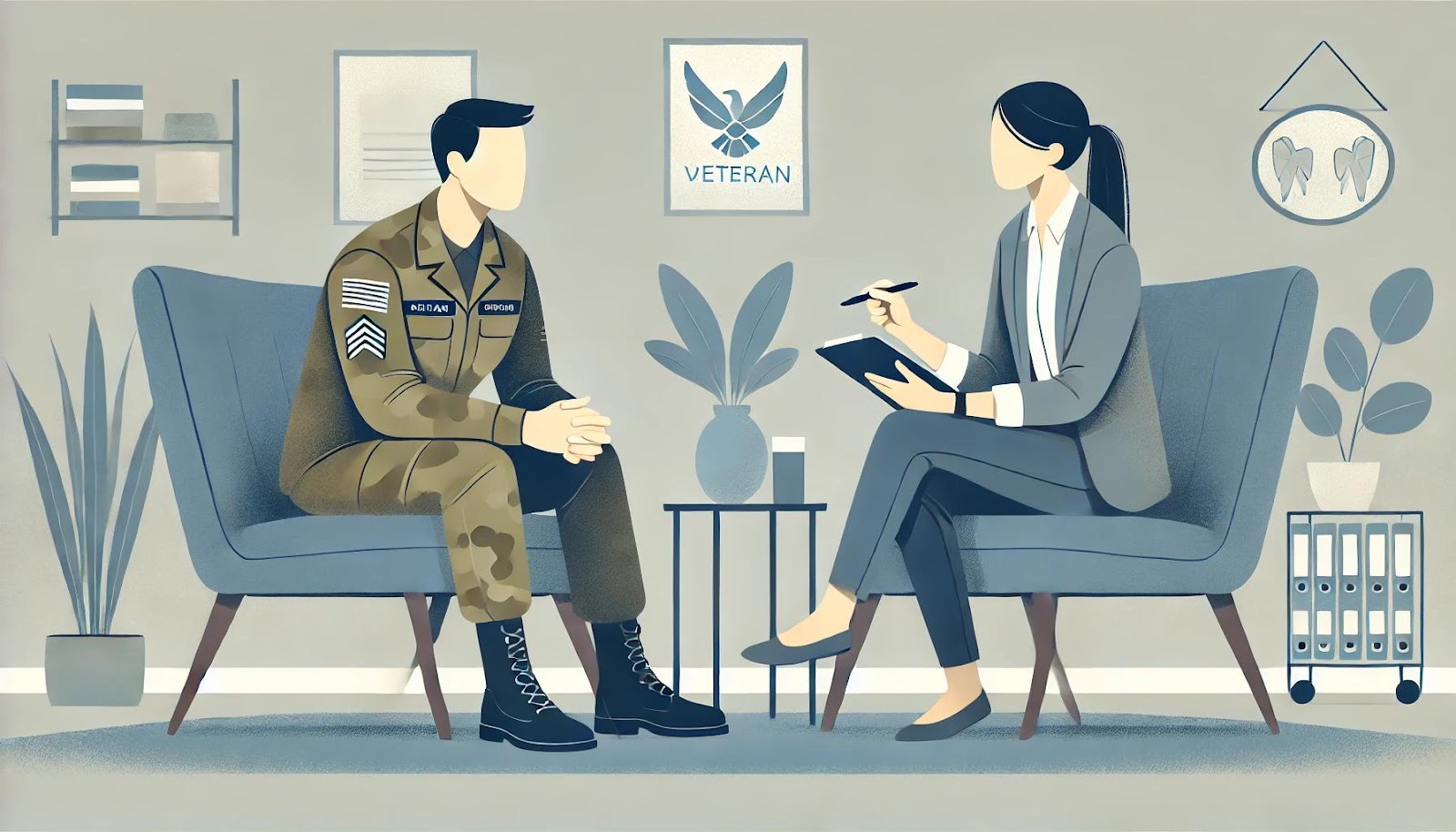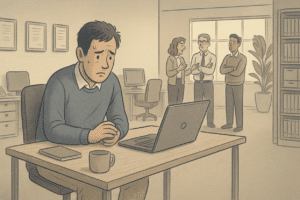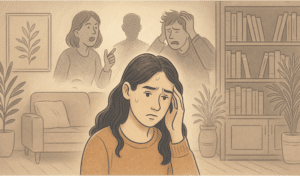Key Takeaways
- Recognizing PTSD symptoms early in veterans is essential for timely and effective treatment.
- Learning about and managing triggers like loud noises or crowded places can significantly help veterans cope with PTSD.
- Using active listening techniques can improve communication and provide substantial support to veterans suffering from PTSD.
- Therapy programs – Cognitive Behavioral Therapy (CBT) and Eye Movement Desensitization and Reprocessing (EMDR) – are critical in effectively reducing PTSD symptoms in veterans.
- A Mission for Michael (AMFM) offers comprehensive and compassionate care that combines evidence-based and alternative therapies to meet the specific challenges faced by veterans with PTSD.
Introduction: Recognizing PTSD in Veterans
Post-Traumatic Stress Disorder (PTSD) frequently develops in veterans following traumatic events in military service. Triggers—such as loud noises, crowded places, or specific smells—can evoke strong emotional responses linked to past trauma. That’s why understanding them is crucial for managing PTSD properly.
PTSD significantly disrupts a veteran’s daily life, affecting their social interactions and ability to perform tasks. Family members play a crucial role by providing supportive and non-judgmental environments, helping veterans cope with their condition and encouraging professional treatment.
Common Symptoms of PTSD
PTSD symptoms can vary from person to person, but there are some common signs to watch for. Veterans with PTSD may experience:
- Flashbacks or intrusive memories of the traumatic event
- Nightmares or sleep disturbances
- Increased irritability or anger
- Feelings of detachment or numbness
- Heightened anxiety or hypervigilance
| A Mission For Michael: Expert Mental Health Care Founded in 2010, A Mission For Michael (AMFM) offers specialized mental health care across Southern California, Washington, and Virginia. Our accredited facilities provide residential and outpatient programs, utilizing evidence-based therapies such as CBT, DBT, and EMDR. Our dedicated team of licensed professionals ensures every client receives the best care possible, supported by accreditations from The Joint Commission and the California Department of Health Care Services. We are committed to safety and personalized treatment plans. Start your recovery journey with AMFM today! |
Communication and Connection
Active Listening Techniques
Active listening involves fully concentrating, understanding, and responding to what your loved one is saying. It means putting aside your own thoughts and focusing entirely on the speaker.
Here’s how you can practice active listening:
- Make eye contact and show interest through body language.
- Ask open-ended questions to encourage further sharing.
- Reflect back what you hear to ensure understanding.
- Avoid interrupting or offering unsolicited advice.
Encouraging Open Conversations
Encourage them to share their thoughts and feelings at their own pace, without pressure. Let them know that you’re there to listen and support them, no matter what.
Sometimes, simply being present and available to talk can make a big difference. By showing patience and understanding, you can help your loved one feel less alone in their journey.
Importance of Empathy
When supporting a veteran with PTSD, empathy can help you connect with their experiences on a deeper level. It involves putting yourself in their shoes and acknowledging their struggles without judgment.
Expressing empathy can be as simple as saying, “I can’t imagine what you’re going through, but I’m here for you.” These words can provide comfort and reassurance, showing your loved one that they have someone who truly cares.
Role of Peer Support Groups
Peer support groups provide a safe space for sharing stories, coping strategies, and emotional support. Veterans often find comfort in knowing they are not alone in their struggles, and peer support groups can be an invaluable part of the healing process.
Joining a peer support group can also help veterans build a sense of community and belonging. It allows them to form connections with others who understand their challenges, reducing feelings of isolation and loneliness.
Veteran-Specific Therapy Programs
There are many therapy programs specifically designed to address the unique needs of veterans with PTSD. These programs often incorporate evidence-based treatments, such as Cognitive Behavioral Therapy (CBT) and Eye Movement Desensitization and Reprocessing (EMDR), which have been proven effective in treating PTSD.
CBT helps veterans identify and change negative thought patterns, while EMDR focuses on processing traumatic memories. Both approaches can significantly reduce PTSD symptoms and improve overall mental health.
Caring for Yourself While Supporting a Veteran

Joining a support group can help caregivers manage stress and build resilience.
Identifying Your Own Needs
Identify areas where you might need support or assistance, and don’t hesitate to reach out for help when needed. Remember, taking care of yourself is not selfish; it’s necessary for maintaining your well-being and being an effective support system for your loved one.
Consider keeping a journal to track your emotions and experiences, which can help you identify patterns and areas where you might need additional support.
Seeking Support Networks
Seek out support networks for family members of veterans with PTSD, either in person or online. These groups can offer guidance, resources, and a sense of community, helping you feel less isolated in your journey.
Practicing Self-Care Techniques
Incorporate self-care techniques into your daily routine to help manage stress and maintain your well-being. This might include activities like meditation, exercise, or engaging in hobbies that bring you joy. Prioritize self-care and make time for activities that help you recharge and relax.
By taking care of yourself, you can ensure that you have the energy and resilience needed to support your loved one effectively. Remember, you cannot pour from an empty cup, so prioritize your well-being alongside supporting your veteran family member.
Finding Additional Resources
Supporting a veteran with PTSD involves accessing various resources to ensure they receive the best care possible. These resources can range from professional therapy to community-based support services.
Start by researching local and national organizations dedicated to veterans’ mental health. Many of these organizations offer valuable information, guidance, and support designed to meet the unique needs of veterans with PTSD.
Additionally, consider exploring online forums and support groups where veterans and their families can share experiences and advice. These platforms can offer a sense of community and connection, helping you feel less isolated in your journey.
Utilizing VA Resources
The Department of Veterans Affairs (VA) provides resources including mental health services, counseling, and therapy programs designed to meet the unique needs of veterans with PTSD.
Community-Based Support Services
Many communities offer support services for veterans and their families, including counseling, support groups, and educational workshops. These services can provide valuable guidance and assistance in managing PTSD symptoms and improving overall well-being.
Reach out to local veteran organizations or mental health centers to learn more about the support services available in your area. These organizations can connect you with resources and professionals who understand the challenges faced by veterans with PTSD.
Online Resources and Educational Tools
Websites, webinars, and online courses can provide valuable information on PTSD symptoms, treatment options, and coping strategies.
Visit reputable websites dedicated to veterans’ mental health, such as the National Center for PTSD or the VA’s mental health resources. These platforms offer a wealth of information and tools to help you and your loved one manage the complexities of PTSD.
Why Choose A Mission for Michael to Treat PTSD?

Professional treatment can provide the tools needed to cope with PTSD effectively.
At A Mission for Michael (AMFM), we provide supportive and comprehensive care for veterans coping with PTSD. Our treatment centers in California, Virginia, and Washington use a mix of proven and alternative therapies to address the specific challenges faced by veterans.

AMFM uses a blend of proven and alternative therapies to treat PTSD effectively.
If your veteran family member is dealing with PTSD symptoms like flashbacks, irritability, or nightmares, contact us at 866-478-4383 to learn about our specialized programs designed to support their path to recovery and resilience.
Start your recovery journey with AMFM today.
Frequently Asked Questions (FAQs)
What are common symptoms of PTSD in veterans?
Veterans with PTSD may have trouble sleeping, feel very irritable, or feel numb. They may also feel very anxious.
Any tips on how I can communicate effectively with a veteran who has PTSD?
Employ active listening by making eye contact, asking open-ended questions, and reflecting back what is said. This shows that you care about veterans and want to help them feel understood and less alone.
What’s the role of peer support groups in managing PTSD?
Peer support groups are a great way for vets to connect and share their experiences.
Are there specific therapies that help veterans with PTSD?
Yes, therapies like CBT and EMDR are effective for treating PTSD. These therapies help veterans process traumatic memories and modify negative thought patterns.
Why choose A Mission for Michael for treating a veteran with PTSD?
At A Mission for Michael (AMFM), we provide tailored, comprehensive, and compassionate care combining evidence-based and alternative therapies. We support our clients in their recovery with specialized treatments that address both the symptoms and the underlying causes of PTSD.







